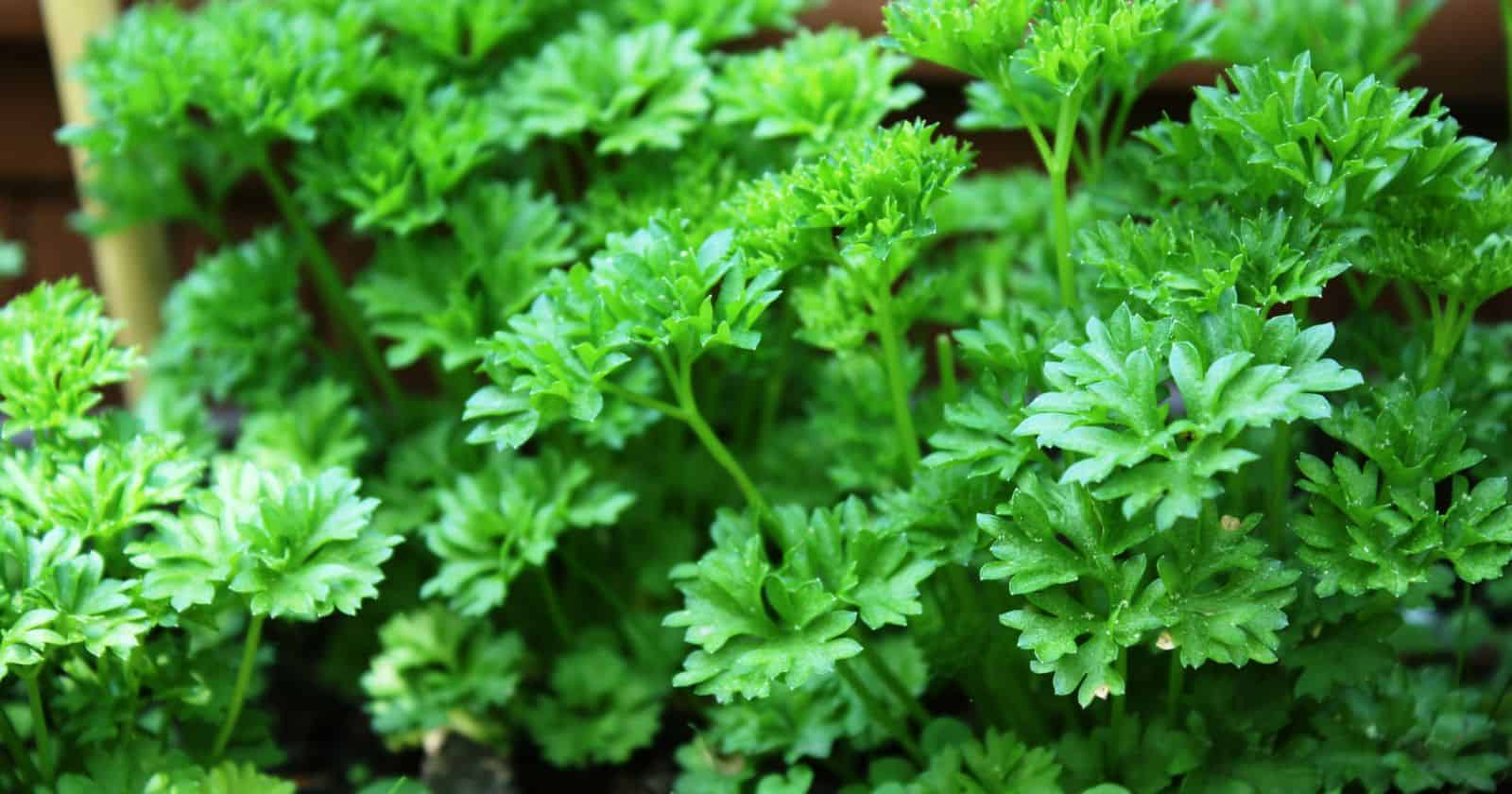Do you often wonder which type of parsley to use in your dishes? With so many varieties of parsley available, deciding which one can be overwhelming.
Plus, if you need to use the right type, it may have a different flavor or nutritional benefits than you’re looking for. But don’t worry; we’re here to help.
In this blog post, we’ll explore the various types of parsley, their flavor profiles, and when to use them in your cooking.
We’ll also discuss the health benefits of this versatile herb and how to store it properly. So, whether you’re a novice or an experienced chef, keep reading to discover all there is to know about the many types of parsley.
Understanding the Different Types of Parsley
There are two main types of parsley: flat-leaf and curly parsley. Flat-leaf parsley has a broad, flat leaf, while curly parsley has finely crinkled leaves. Each variety has its unique taste and purpose. Here’s a deeper look at this topic:
Flat-Leaf Parsley: This type of parsley has a more robust flavor than curly, making it the preferred choice for culinary purposes. It is also known as Italian parsley because it’s commonly used in Italian dishes like pasta, meatballs, and soups.
Curly Parsley: With its decorative curly leaves, this type of parsley is often used as a garnish to enhance the beauty of dishes. However, curly parsley also has a pleasant taste that can add depth to dishes. It’s often used in salads, dips, and marinades.
Other Varieties: Many other varieties of parsley are worth knowing. For example, Japanese parsley has a milder taste and is popular in Asian dishes. Hamburg parsley has edible roots with a flavor resembling parsnips or celery roots. Extra Curled Dwarf is a type of curly parsley with exceptionally curly leaves.
Choosing the Right Parsley: When growing parsley, select the variety that best suits your needs. Flat-leaf parsley is the best choice if you want to use it for cooking. If you want to use parsley for decorative purposes, curly parsley is a great option. However, both types have unique tastes, so feel free to experiment and find what works for you.
Flavor Profiles of Each Type of Parsley
Flat-leaf parsley has a more robust flavor than curly parsley, which is generally used for decorative purposes. On the other hand, Italian or flat-leaf parsley has a more subtle taste than curly varieties. However, it has a peppery and fresh tang so it can be easily mistaken for cilantro.
Curly parsley, on the other hand, has a muted flavor that reminds you of grass. It can get more bitter as time passes, primarily when the leaves are crushed. Despite its low taste profile, curly parsley is still widely used in culinary as a garnish to balance the flavor and to add color.
Hamburg or Parsley Root has a flavor profile that resembles carrots and celery. Its taste has a subtle sweetness, providing an earthy and aromatic flavor to dishes. Hamburg parsley is often added to soups and stews and eaten raw in salads. It is also incredibly versatile and can be used instead of carrots or celery in many recipes.
When to Use Each Type of Parsley in Your Cooking
Generally, flat-leaf parsley is preferred for cooking, as it has a more robust taste than curly parsley. However, both types of parsley can be used in various dishes and as garnishes depending on the recipe and personal preference.
Knowing which type to use for the best flavor and appearance is essential when using parsley in your cooking.
Here are some guidelines to help you decide when to use each type of parsley in your cooking:
- Flat-leaf parsley: This type of parsley is best used for cooking, as it holds up well to heat and has a more robust flavor than curly parsley. You can use it in sauces, marinades, soups, stews, and as a seasoning during the cooking process. Flat-leaf parsley can also be used as a garnish, adding a pop of green to finished dishes.
- Curly parsley: While not as flavorful as flat-leaf parsley, curly parsley is still an excellent option for garnishes and adding a splash of color to finished dishes. It works well in salads, sandwiches and as a topping for soups and stews. Curly parsley can also be used as a decorative element in vegetable or fruit platters.
- Italian parsley: This type of parsley is a variety of flat-leaf parsley with a slightly sweeter taste and a milder flavor. It’s usually used in Italian cuisine, hence the name, and works well in pasta dishes, pizzas, and salads. Italian parsley can also be used as a garnish, adding a fresh and vibrant touch to finished dishes.
Health Benefits of Parsley: Why You Should Incorporate it into Your Diet
Are you looking for some healthy additions to your diet? Look no further than parsley. This humble herb contains nutrients and compounds that can keep you in tip-top shape. Here are some of the top health benefits of parsley and why you should consider adding it to your meals.
Parsley is a natural diuretic that can help flush excess bodily fluids. This can reduce bloating and help regulate blood pressure.
Also, parsley is high in vitamin K, which is essential for strong bones. Vitamin K allows your body to produce osteocalcin, a protein that makes bones denser and more resilient.
In addition to vitamin K, parsley is loaded with other nutrients that can benefit your heart health. For example, it contains folate, a B vitamin essential for controlling homocysteine levels. High homocysteine levels have been linked to an increased risk of heart disease.
Parsley is also an excellent source of antioxidants like vitamins C, A, and E, which can help protect your cardiovascular system.
Finally, parsley has been shown to have anti-inflammatory properties. This is thanks to its high levels of flavonoids and other antioxidants. By reducing inflammation, parsley may help reduce your risk of chronic diseases like cancer, Alzheimer’s, and Parkinson’s.
Furthermore, parsley has been shown to support the cellular antioxidant enzyme system, which helps decrease gastric inflammation.
Storing Parsley: Tips and Tricks for Keeping it Fresher for Longer
To keep parsley fresh for longer, store it in a container with an inch of water, covered loosely with a plastic bag in the refrigerator. Change the water every few days.
Throwing away herbs is frustrating because they’ve gone wrong before we can use them. Fortunately, parsley can be stored for extended periods with the proper care. Here are some tips and tricks to keep your parsley fresher for longer.
- Trimming the Stems: Trim the stem ends slightly before storing the parsley. This will help the parsley absorb water more efficiently, keeping it hydrated while in storage.
- Refrigerator Storage: Place the trimmed parsley in a container with an inch of water and cover it loosely with a plastic bag. Then store it in the refrigerator. This method can keep parsley fresh for up to two weeks. Remember to change the water every few days.
- Room Temperature Storage: If you plan to use the parsley within two to three days, it can be stored at room temperature. However, keep it in a cool place, out of direct sunlight.
- Container Storage: Another option to keep parsley fresh is to trim the stems and place them in a water container, then store them in the refrigerator. Rinse and dry the parsley before using it.
Parsley as a Garnish: How to Make Your Dishes More Beautiful
Parsley is a fantastic way to elevate your dishes and make them visually appealing. Its bright green color and distinct flavor can make any meal pop. Whether making a hearty soup or a light salad, parsley is a great garnish to add that extra oomph of flavor.
Use the whole plant, including the stems, to make the most of parsley as a garnish. Chopped parsley can be sprinkled on your finished dish and provide freshness.
Here are some tips to make your words gorgeous with parsley:
- Use parsley as a finishing touch: No matter what your dish is, parsley can be used as an elegant finishing touch. It adds color and texture, making your dish more visually appealing. Chopped parsley can be sprinkled over salads, pasta dishes, roasted vegetables, and soups.
- Sauté parsley for a side dish: Sautéed parsley is a delicious and healthy side dish that pairs well with grilled meats and seafood. Simply heat some olive oil in a pan, add chopped garlic, and sauté parsley for a minute or two. Serve it as a side, or mix it with rice for a flavorful and colorful side dish.
- Add parsley to broths and stocks: Parsley is a natural flavor enhancer and can be used to boost the flavor of broths and stocks. Add parsley to your soup or stew to give it an aromatic boost. You can add it to your marinades and dressings for an extra kick of flavor.
Parsley Substitute
Are you out of parsley but still want to add a touch of greenery to your dish? Fear not! There are plenty of substitutes for parsley that you can use – in fact, the possibilities are endless.
Let’s dive into some of the best parsley substitutes you can try.
Arugula, basil, carrot tops, celery leaves, chervil, chives, cilantro, dill, fennel fronds, and tarragon are all great substitutes for parsley. They are flavorful and versatile, making them perfect for garnishing or adding to a recipe.
Did you know that flat-leaf parsley can be replaced with curly-leaf parsley or vice versa? That’s how easy it is to substitute parsley.
Fresh arugula, endive, chives, cilantro, dill, and fennel fronds are some of the best substitutes for fresh parsley. Each of these herbs has a unique taste and aroma that can add dimension to your dish.
In Italian cuisine, you can also replace parsley with basil and oregano. These herbs are a perfect complement to tomatoes and pasta – yum!
Carrot tops are your best bet if you want a substitute for parsley that looks precisely like it. Carrot tops have a similar appearance and texture as parsley but with a tangy taste that can add a refreshing kick to your dish.
Next time you make a salad, try using carrot tops as a substitute for parsley; you’ll be pleasantly surprised by how delicious it is.





